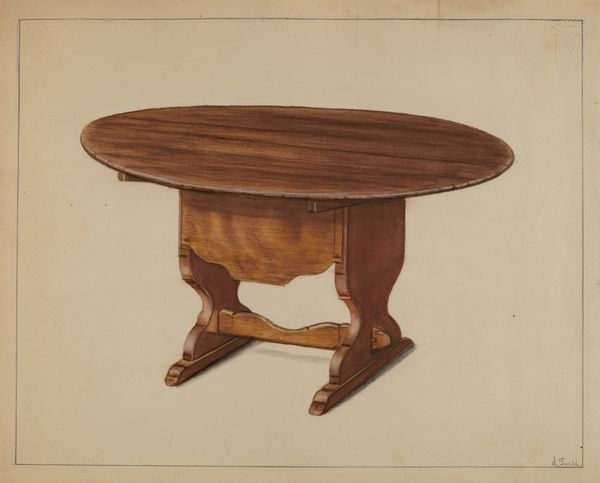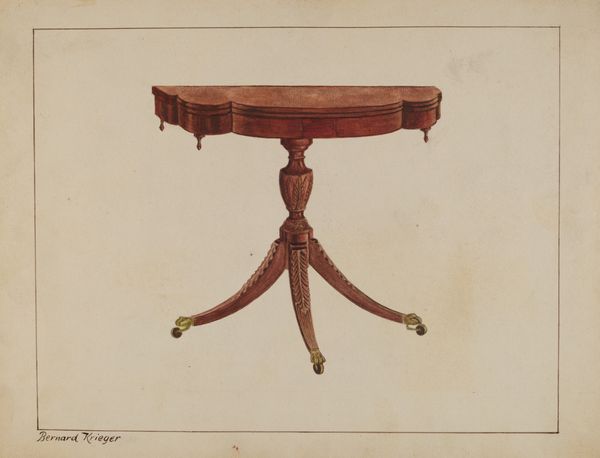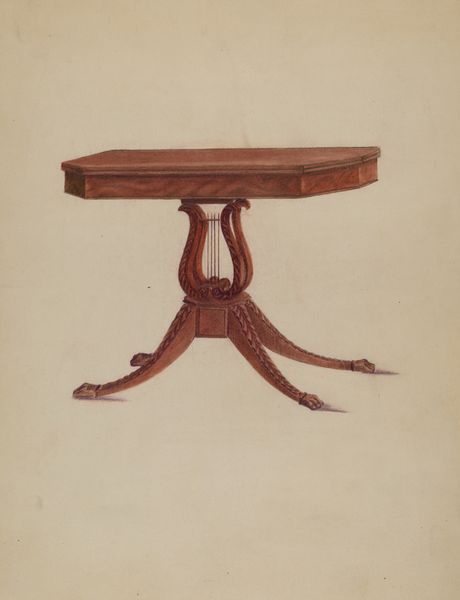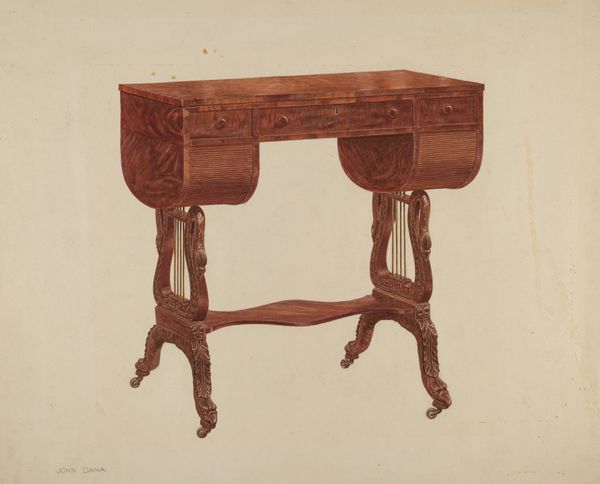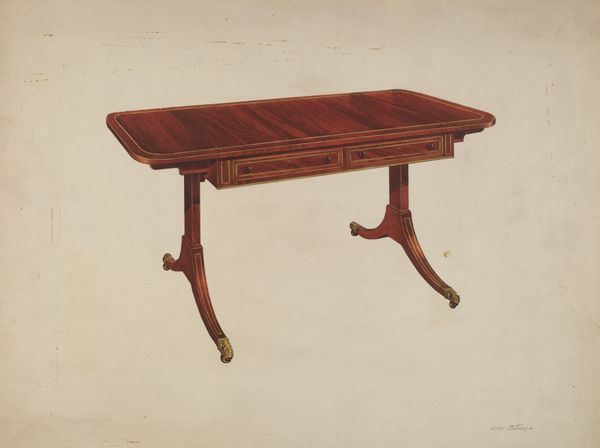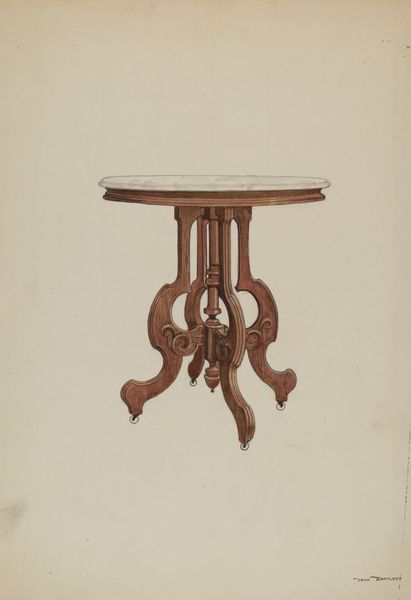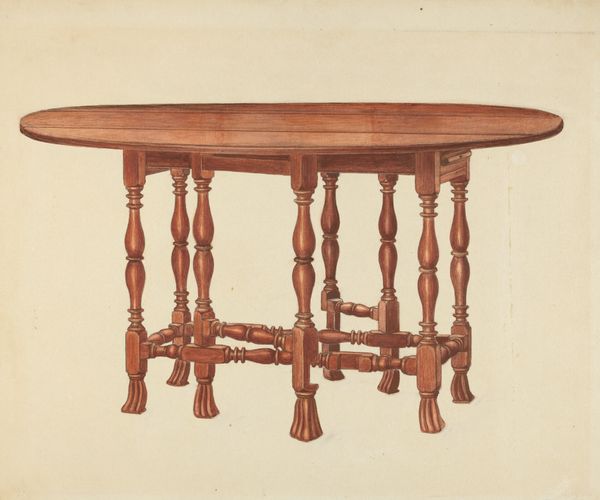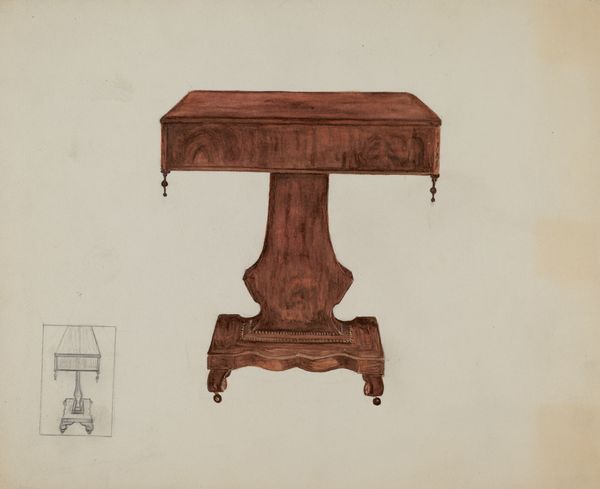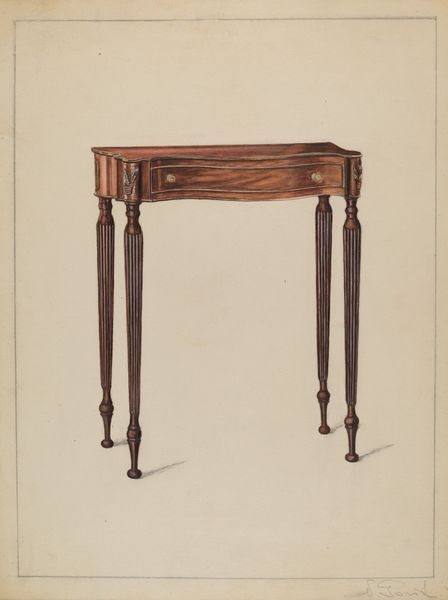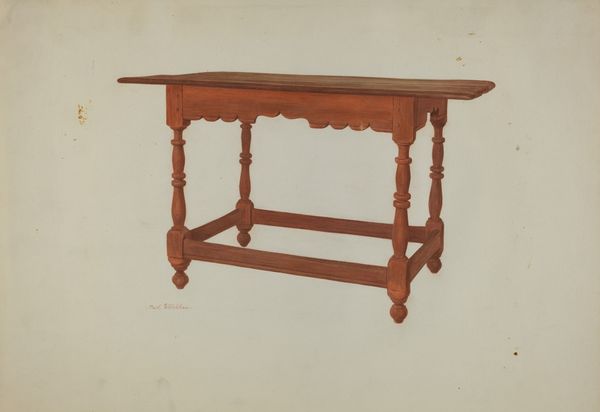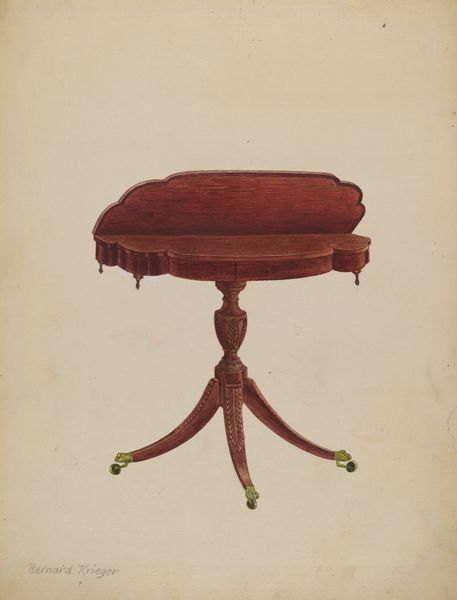
drawing, watercolor
#
drawing
#
water colours
#
watercolor
Dimensions: overall: 22.9 x 29.8 cm (9 x 11 3/4 in.) Original IAD Object: 29 1/4"high; 36"wide top. See scale dwg. for dets.
Copyright: National Gallery of Art: CC0 1.0
Editor: This is Francis Borelli’s "Card Table," a watercolor drawing from sometime between 1935 and 1942. I'm immediately struck by the almost diagrammatic feel. It’s clearly meant to represent the table, but also, I don’t know, present its essential form. What do you see in this piece, from your perspective? Curator: What a curious piece! A floating foot there to the side. Are we to infer a kind of disassembly? Or perhaps a latent violence inflicted upon this rather staid piece of furniture? The table itself, with its central pillar carved with acanthus leaves, evokes a specific kind of aspirational, almost neoclassical, sensibility. Editor: I see what you mean. The floating foot makes me think of deconstruction. Is there perhaps some cultural anxiety being represented here? Curator: Possibly. Remember this was made during the Depression and into the War years. Consider the table's function. A card table speaks to leisure, to social gatherings. The separated foot introduces a sense of unease and vulnerability to these symbols of middle-class stability. Is this an invocation of a disruption to domestic order? The floating foot is also a reminder of mortality, literally dismembered and objectified. Does this symbol resonate with you? Editor: Absolutely. I hadn’t considered the social context in relation to the symbolism of a card table. Seeing the broken leg makes the image very dark, reflecting on broken leisure time and a lost leg. Curator: Right! A lost limb for lost hours. Editor: This reading gives so much more insight into Borelli's work. Thanks for clarifying the complex imagery and its cultural context.
Comments
No comments
Be the first to comment and join the conversation on the ultimate creative platform.

